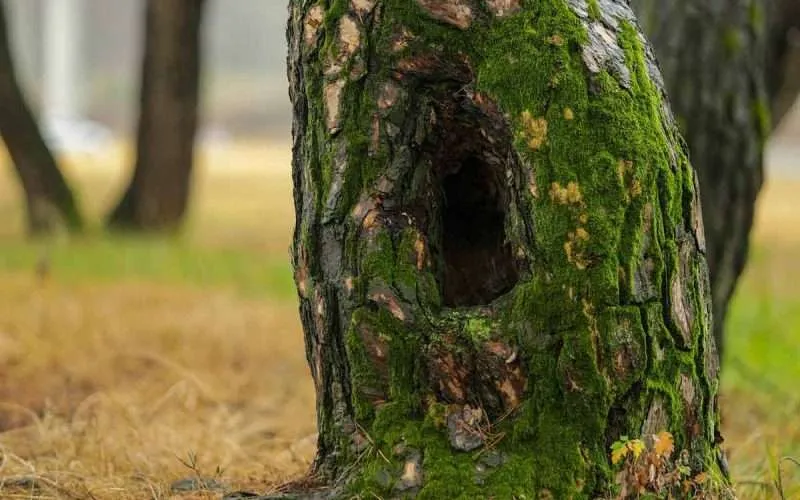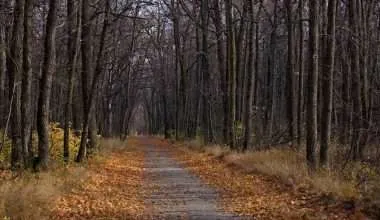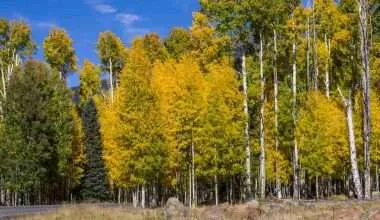Table of Contents Show
There is a sort of romantic charm attached to holes in trees. If you are quiet enough maybe you will be able to see a squirrel daddy poke his head out of a tree hole. And if you are magical enough, you might just see a fairy peep out before flying away.
But is a hole in a tree really as romantic an occurrence as it sounds? Are there any problems associated with holes in trees? Do these tree holes add character to a tree or are mere indications about the poor health of the trees in question?
These are questions that’ll arise in the mind of any person who has a tree growing in their garden soil. So what do the holes in your tree say about the health of the tree and the care it requires?
Well, tree holes may be formed due to three, major causes:
- Humans
- Weather
- Small and large creatures
Although of course, it is not necessarily in that order. These three causes may be further subdivided into a multitude of reasons that end up forming large as well as small holes in trees.
This blog will explore the causes, symptoms, and cures for trees that have small to medium sized holes in them.
Trees with holes: Symptoms and Causes
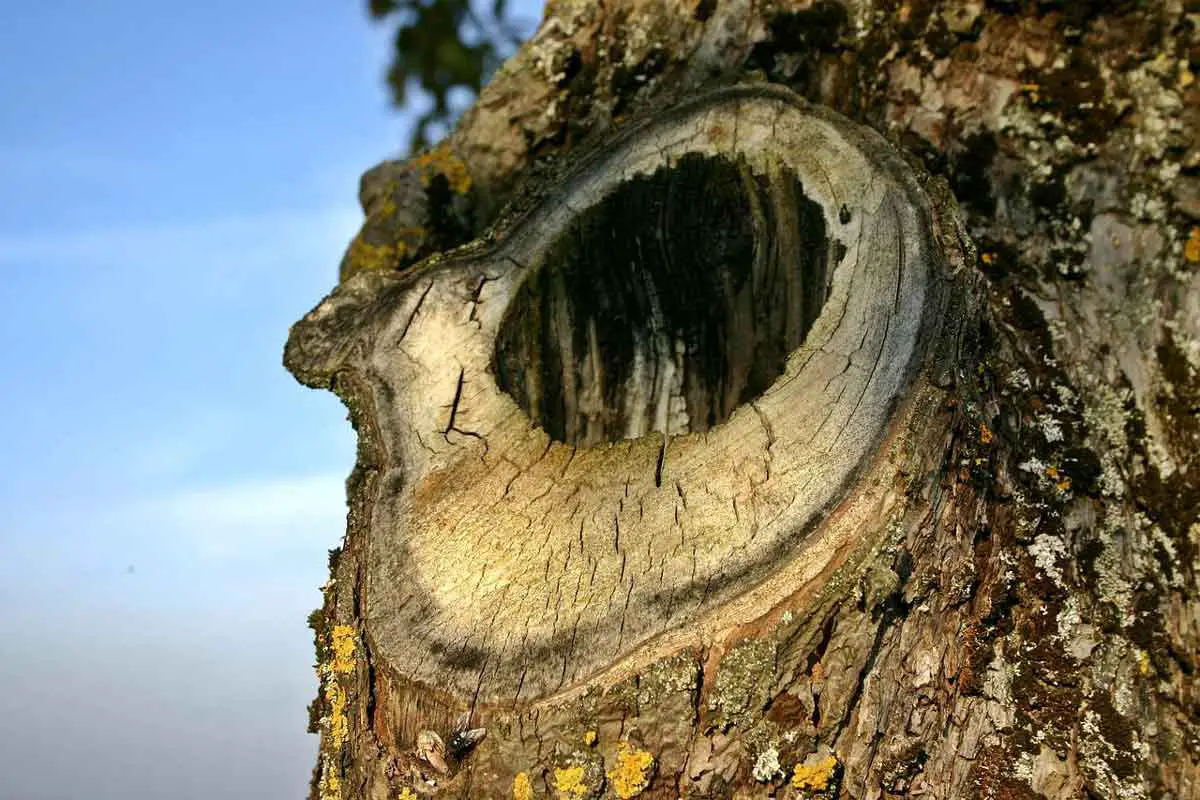
A tree with a hole in it is a common sight in many areas of the world. It’s not always easy to tell what caused the hole and what the tree can be saved from. There are many different types of trees with holes in them, so it is important to know what the symptoms are.
There are seven main reasons why your tree has holes in its trunk. These could range from human influenced reasons such as tree testing to more natural reasons like weather damage.
The following are detailed outlines of the seven most common causes of why trees get holes. This is followed by the extent of damage they cause and just what you can do to prevent those holes.
1. Holes made during tree-testing
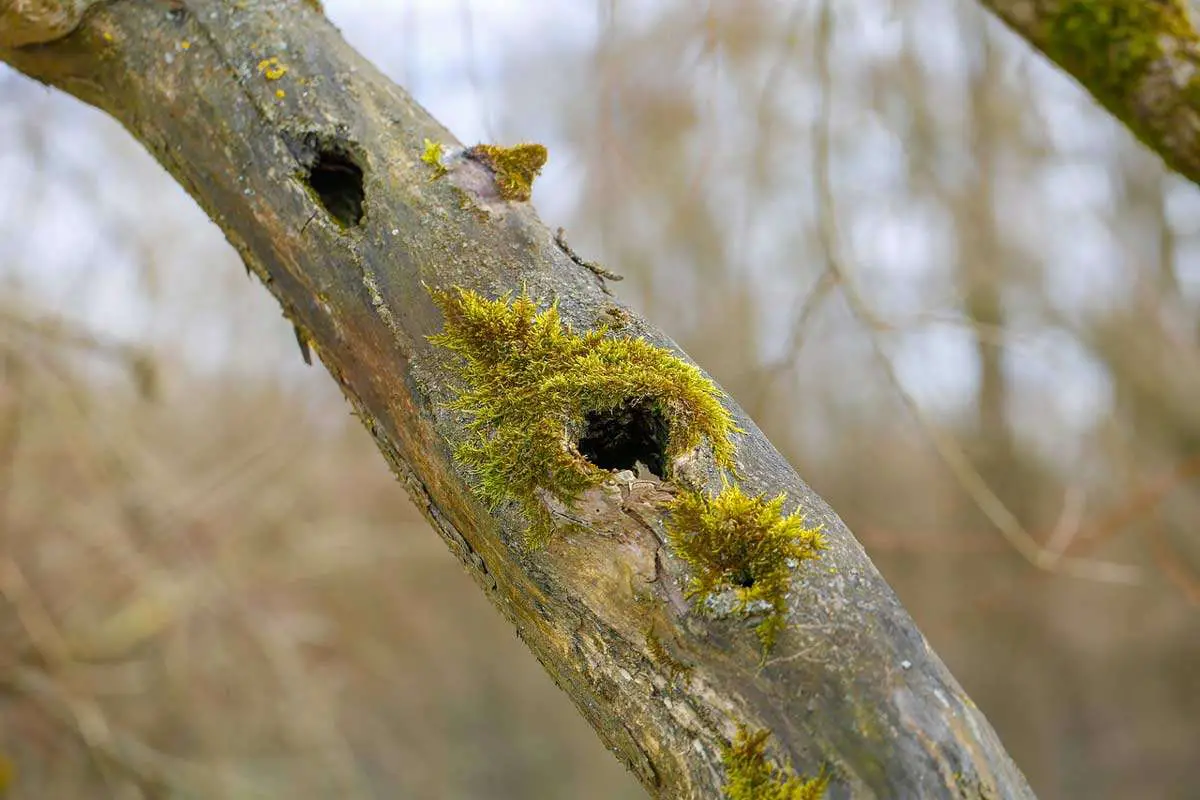
Starting with the least damaging actions, holes may be made by increment boring, when testing to check a tree’s age. The tools are very specific. A very small sample of living tissue is taken which will later be tested to assess the age of the tree.
Increment borers, as they are called, are used by foresters, researchers and other scientists to assess exact ages of trees. There is no limitation though. Anyone can use increment bores however, it is best to allow professionals to use them.
That’s because the more experienced professionals will do least damage to the tree. Non professionals could cause serious damage to trees.
2. Holes made from sap tapping
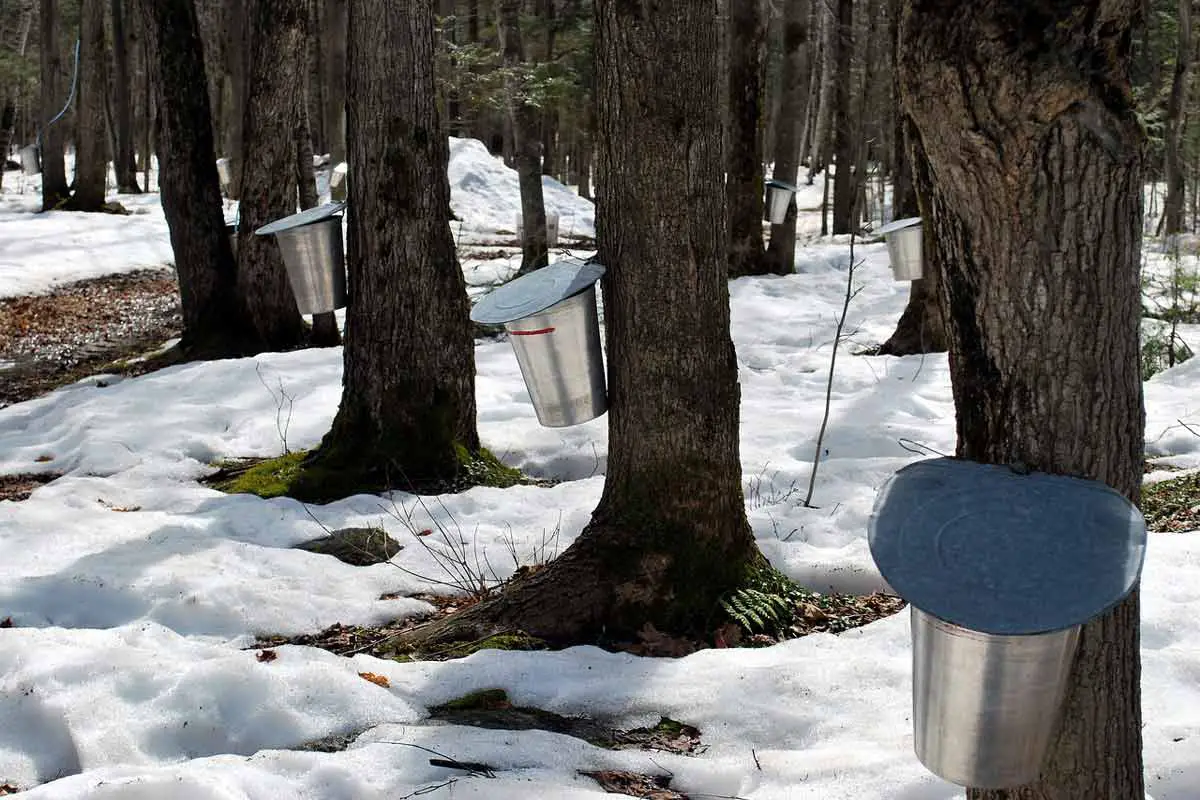
Tapping trees is simple enough and carries the added benefit of allowing you to obtain the sap that you wanted so badly. However, tapping does involve making a hole in your tree, so that is one other added reason why your tree will have a hole in it.
While tapping, you need to ensure that the hole you make in the stem is deep enough to penetrate the bark properly. The hoile should also be at least two to four feet above ground level. The spile must be placed at an angle to allow the sap to drain efficiently.
Some precautions you need to take are to ensure that you are not tapping where there is a leaf spot. This will only damage the leaf. Your hole should penetrate the tree stem a few inches deep so as to not cause undue damage to it.
Making the tapping hole right will not cause any disease to the tree. In fact, tree tapping is a lot like increment boring. If done right, no serious damage is caused to the tree or any leaf of the tree.
3. Holes made by woodpeckers
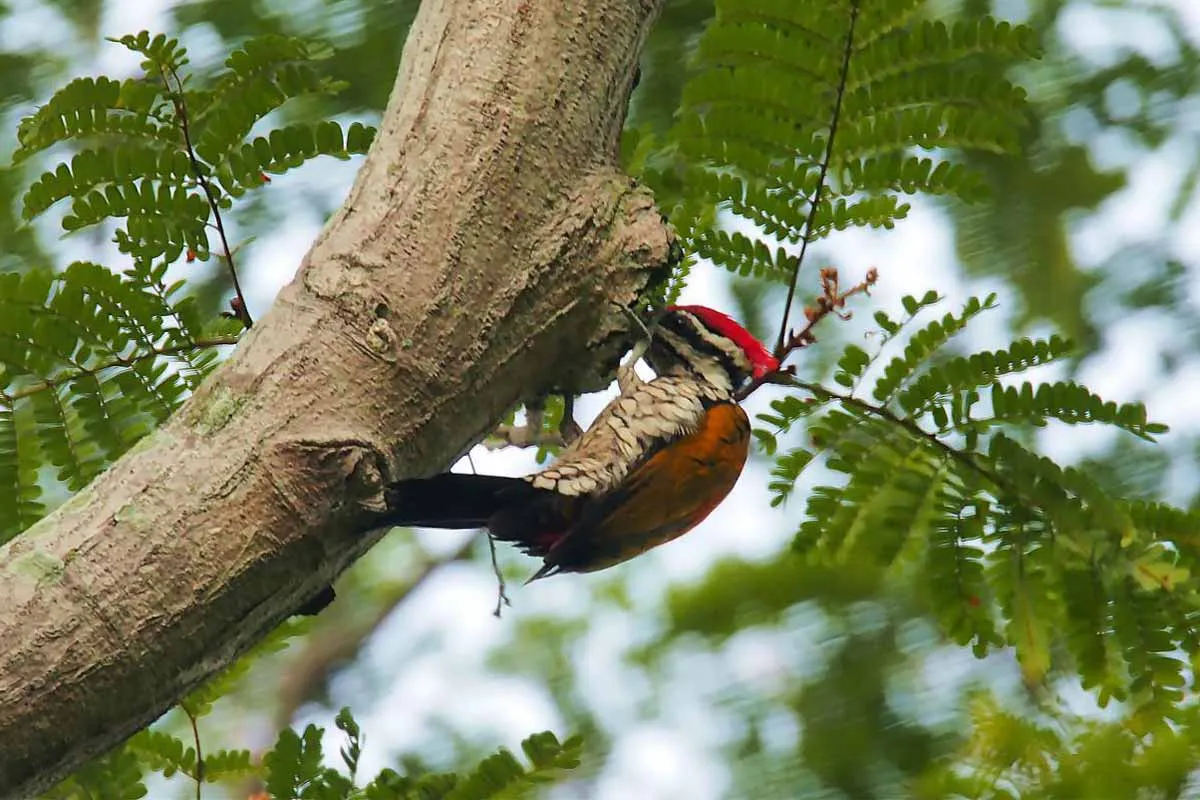
Woodpeckers, with their famous affinity for boring into wood, are a must-have on this list. Thanks to their impeccable hearing, woodpeckers can actually hear any beetle and other insects that survive under the tree bark.
They then use their long and strong beaks to bore through the wood and get to these insects. While woodpeckers can peck through healthy wood, it is the softer, decaying wood they try and seek out. This tells you that that particular part of the tree might have some disease that’s making the wood soft.
So if the hole has been made by a woodpecker, you can be sure there’s a problem with the tree. In most cases, this could even be an indication that your tree is dying due to some disease. This would probably also be a good time to check the leaf cover of your tree to ensure its health.
Woodpeckers don’t just peck small holes in your tree, they also utilize larger, available hollows to build their nests in.
4. Holes made by other animal species
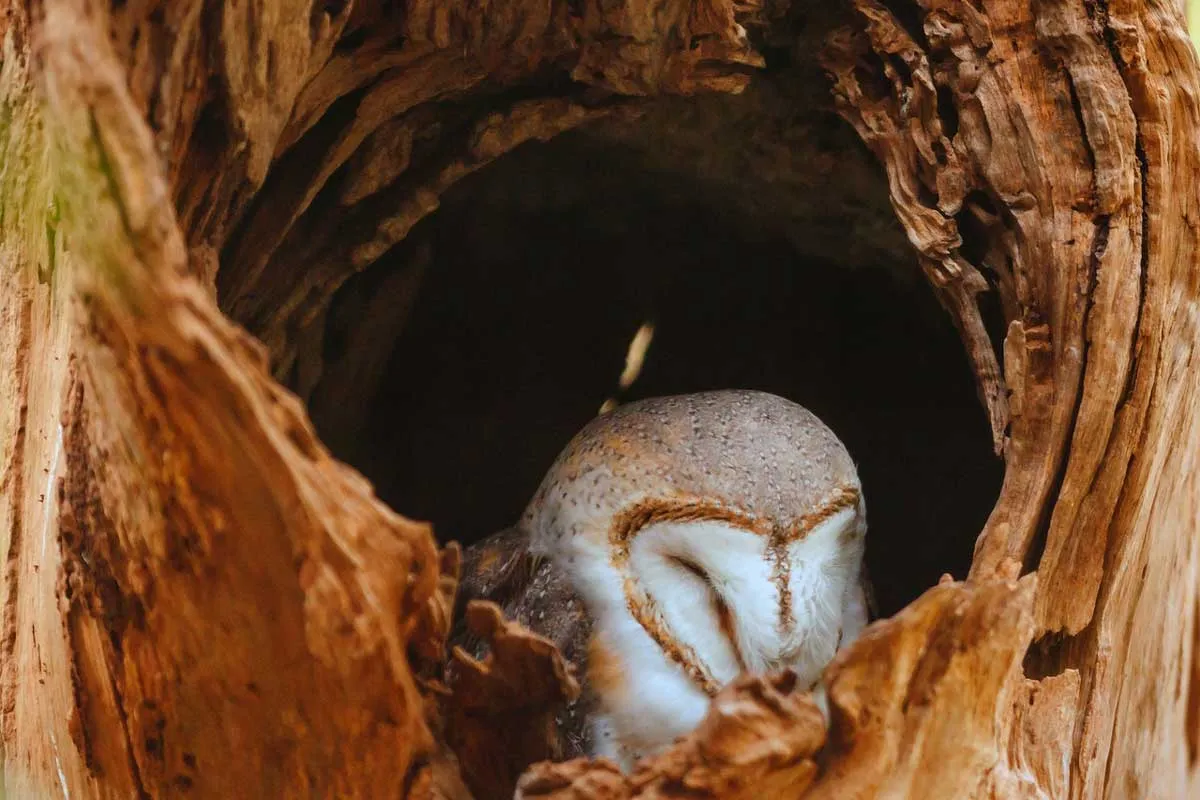
There are many species of birds and animals that like to create their nests in trees. And this list is not just limited to woodpeckers or squirrels. On the contrary, chickadees and nuthatches are two other bird species that like to make their nests in tree hollows.
Again, while they are not famous for pecking like woodpeckers, they use tree decay in similar ways. They will search out any tree that has some disease, or whose wood is decaying. They will further utilize this wood to build homes in tree cavities.
Their pointed beaks are an added advantage since they can peck very swiftly through any branch that has a disease. These birds also tend to peck at soft, disease-ridden wood in order to eat any insect such as the beetle, found under the bark.
5. Holes made by the humble beetle
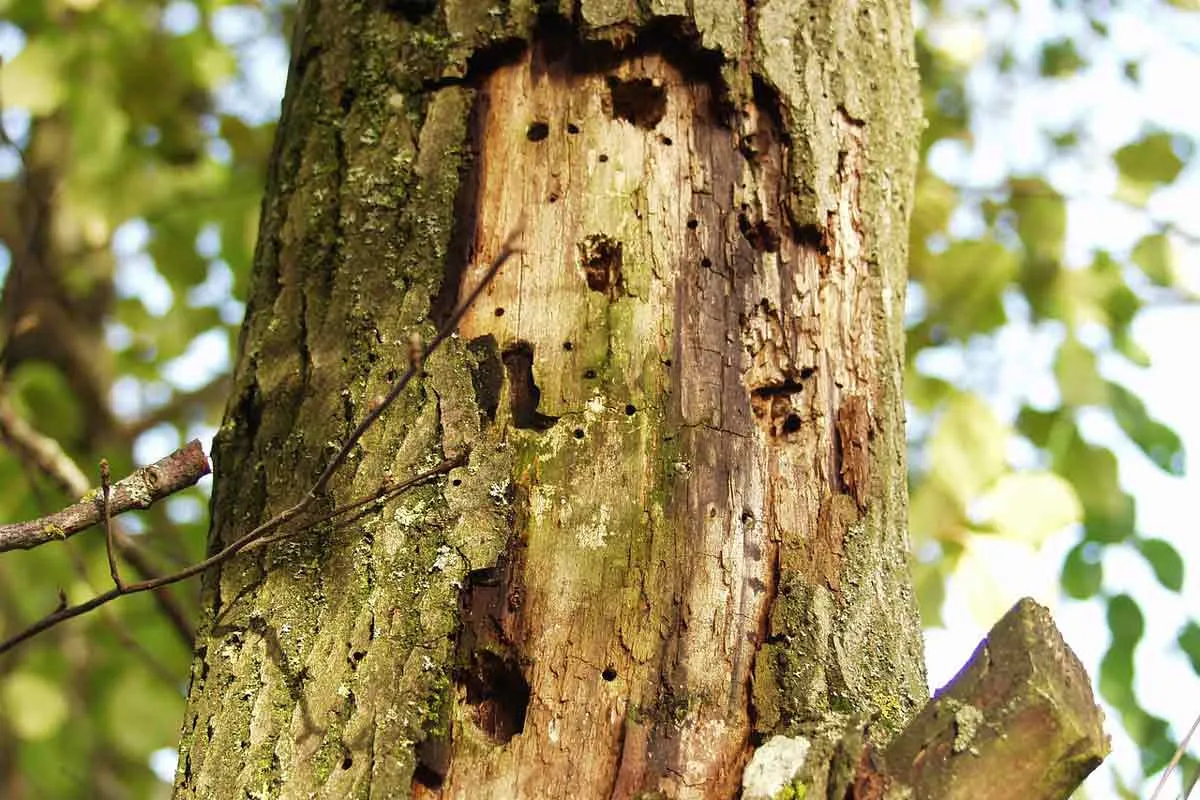
No, the beetle is not humble. In fact, it can cause untold damage to all parts of your tree, be it the leaf, stem, branch or root. Beetles are just one of the insect species that can bore tiny holes in your tree bark and stem.
If you notice a small hole in your tree, it could be a sign of a termite infestation also. Termites are wood-eating insects that can cause a tree to weaken and die.
So if you notice a hole in a tree, you should try to find the nest of the insect species that could be the potential cause behind the hole. The reason is because if you don’t eliminate them right away, they have the potential to eat away the entire stem.
If you manage to find the nest, you can try to eliminate it and save your precious tree. If you cannot find the nest, you can try to seal the hole with a barrier of some sort.
You should also know that it is possible for a tree to have a hole in it from an animal. In fact, here is how it goes. A beetle attacks your stem, spoils the leaf cover of your trees, and makes holes in it.
Birds such as woodpeckers or the chickadees realize that your tree probably has a disease. In any case, it is a food haven for them. They start to make holes of their own to reach the species of insects under the bark.
A storm turns up. Your tree likely already has some disease. The storm creates a bigger hole in the already damaged tree. As a result, you now have a very weak, decaying tree on your hands. At this point, the best solution is often to just get rid of the tree. This is important if the tree’s at a point where falling down can damage your property.
6. Holes made during storms
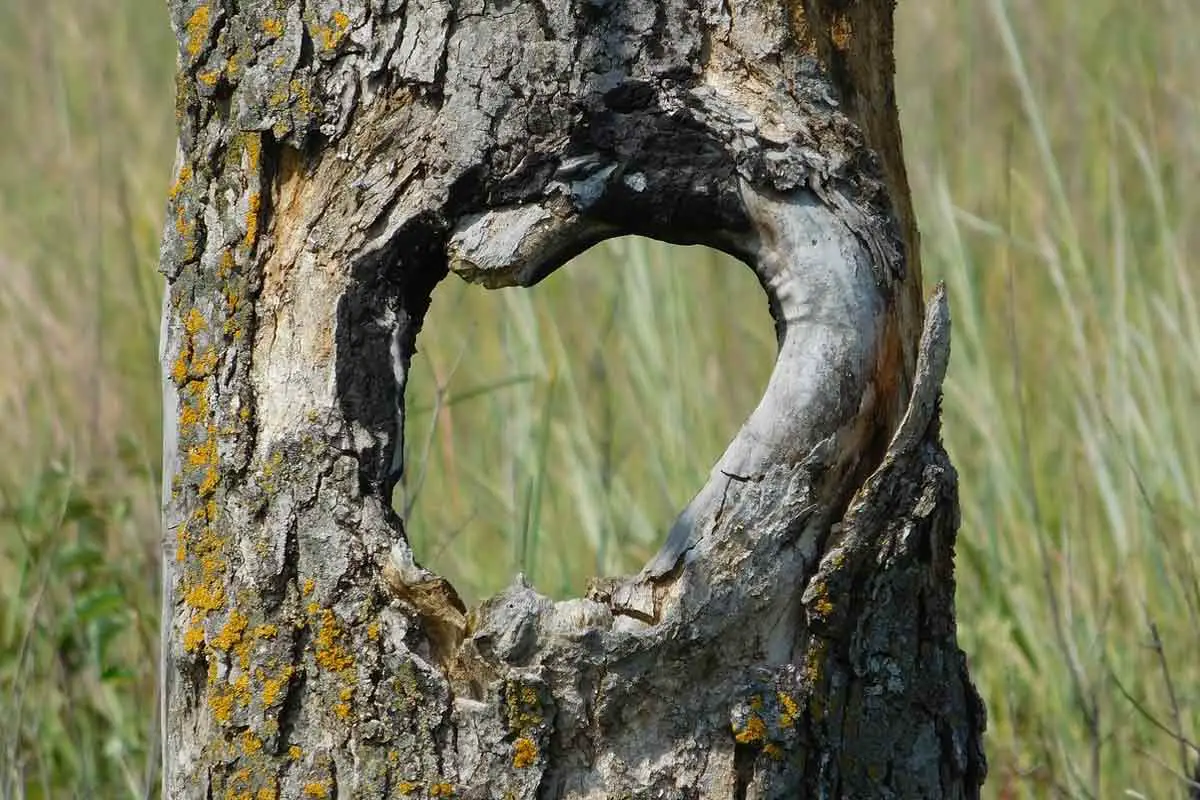
The elements can be quite dangerous. Ask any tree caught out in a wild storm and they will tell you that it is so.
Heck, they will even have the holes to show for it! Provided, of course, that they manage to survive the said storm.
Random branches that break off during storms cause some of the most severe damage to any tree. The first of these is the gaping hole that they leave behind.
Such holes are made very suddenly, usually when a branch is roughly ripped off of the tree. This is done with an intensity that can cause a lot of damage to the tree, and creates a very large hole also.
This also means that the recovery time that the tree will now require will be excessively long… there is no guarantee either that the tree will even be able to survive in the first place.
To survive, even a damaged tree needs a certain amount of structural integrity. Here, with no structural integrity, the stem can’t support the weight or functions of the remaining tree.
With a limb ripped out, decay will start to spread within the tree which will become imbalanced and at risk. It doesn’t have to be the case every time. Sometimes care, in the form of fertilizers,insecticides and sufficient sunlight and water can help a tree recuperate and heal. However, it is a long, and often unsuccessful process.
7. Holes caused by other outdoor projects
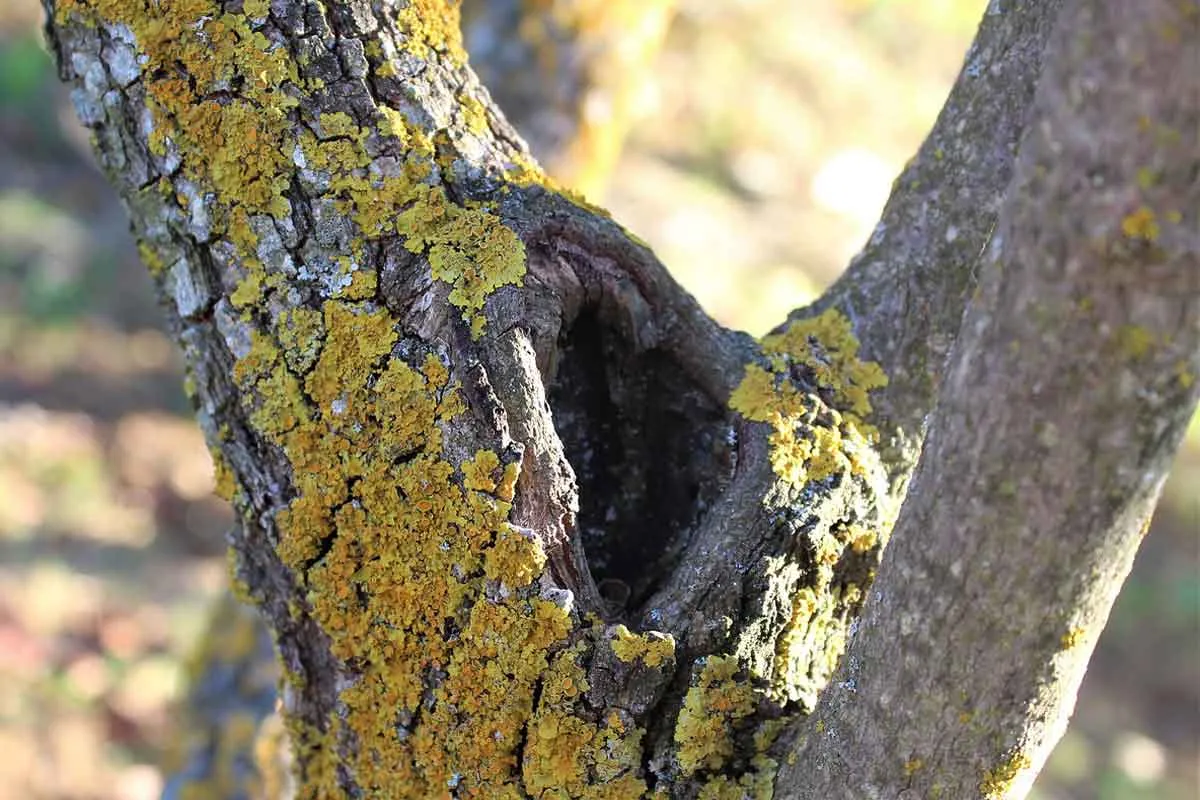
Unless your tree’s healthy and mature, stapling or drilling into the exterior of the tree can cause it some stress. The holes are generally minuscule and should not cause either serious stress or damage.
For safety’s sake, both for the tree and your project, don’t drill or staple into very young or old. The bark may not be able to take the weight of the project you’re connecting which could fall down.
How to cure a tree with a hole in it
There are many different types of tree diseases that can cause holes in trees, but the most common is called borer. Bores can come from a variety of insects, including the eastern tent caterpillar and the hemlock wooly adelgid. You can tell if a tree has a borer because the tree will have a hole in the trunk that is surrounded by a web of frass. Borers can also cause branches to be stunted and have a reddish-brown color. There are many ways to treat a tree with a borer, but the most important thing is to wait for the tree to grow new branches. If you try to remove the borer, the tree will die.
Should You Be Worried About Tree Holes?
Trees are beautiful and useful since they provide so many benefits both to a community and the country. They are also prone to being vulnerable since they get affected by factors like storms and wind.
When they get hit, they can split or break and create a small hole in them. Sometimes when this happens, it just isn’t that big of a deal. But there are times when this can be a significant issue also.
Survival with holes is certainly an option. And one that holds true especially if the holes are smaller ones such as those that have been caused by human activities. This includes holes caused during borings, tappings, and other similar, outdoor projects that do not harm the tree too much.
Most trees are very resilient by nature and can usually adjust to any hardships that they encounter. For this reason, trees with holes, whose structural integrity is not compromised, will have better survival chances also.
All the same, if the damage done to the tree is greater, survival chances become slimmer also. For instance, a tree has a vital limb that broke off after being hit by a storm. Here the tree will be in obvious distress while its survival will also be at stake.
Is action always required?
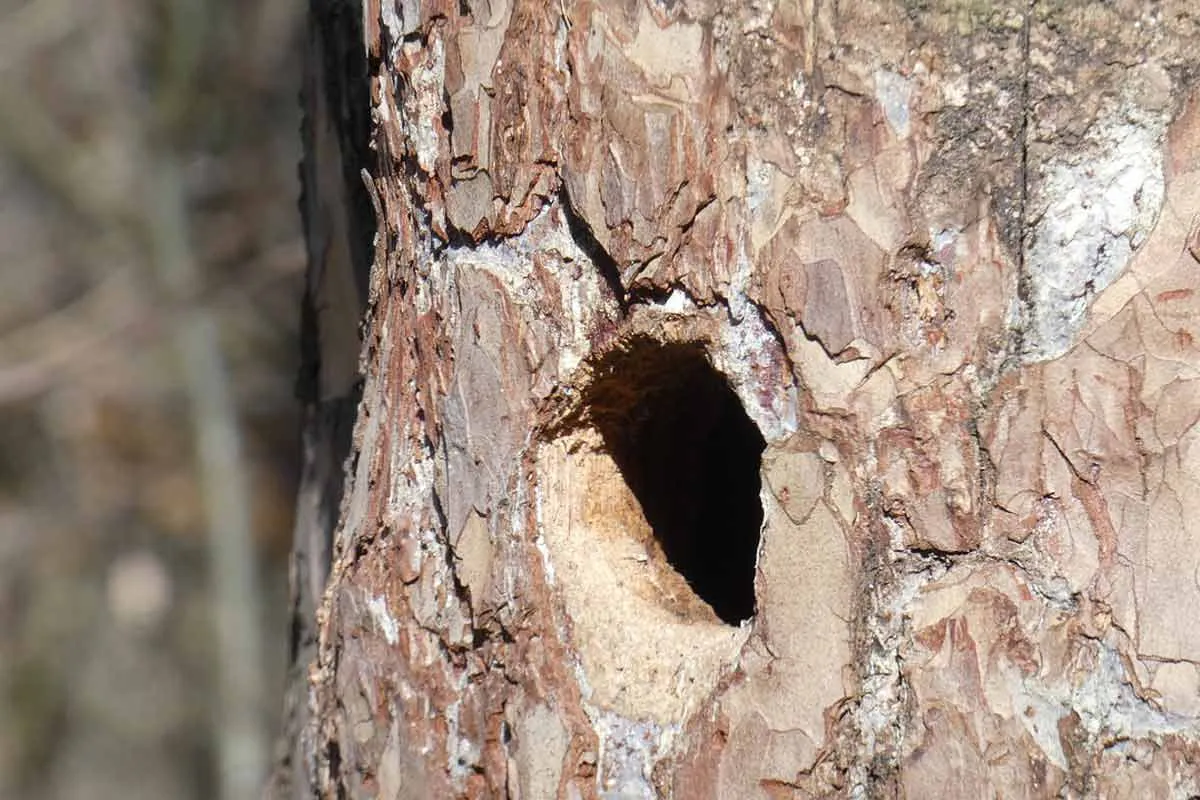
Depending on the extent of the damage done to your tree, some sort of action is naturally required. The age-old practice of filling up trees with cement has been classified as being a more problematic approach. In fact, research suggests that at times doing nothing is the best line of action.
Obviously, that gaping hole you can see in your tree, could give you nerves. But here, it is not your nerves that you should be worried about. It is the stress that is being caused to your tree that should be your major concern.
If your tree really has that big of a hole in the trunk now, it’s worrying for sure. Give your tree some time though, so that it may recover naturally. If it doesn’t then you may explore other options.
In such a case, one of the best ‘other’ options available would be to fill up the hole using some form of caulking. This will prevent water damage and, unlike filling with cement, will not cause the tree further damage.
As the saying goes, prevention is better than cure. No matter how much caulking you use to fill up that hole in your tree, nothing beats good ol’ prevention measures.
Try growing your tree in a spot where it will be least likely to be affected by damages from extreme weather conditions. Make sure to check regularly for termites, and other insects that could make holes in your tree.
In spite of these measures, if your tree still ends up getting a hole, allow it to heal naturally. If it doesn’t heal on its own and the tree’s health only appears to be deteriorating, then try other measures. Fill up the hole with caulking, or some other ‘safe’ material so that your tree regains its health also.
